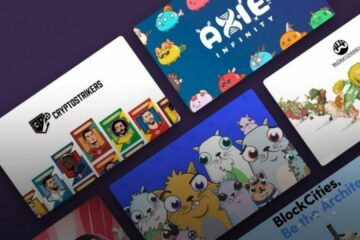NFTs, for non-fungible tokens, are used to authenticate files on the Internet OpenSea. A kind of title deed, which allows virtual works to be certified, and which is inviolably registered on the blockchain.
NFTs have revolutionized the virtual art market, but are also receiving a lot of criticism, especially for their impact on the environment. We explained at length the reasons that led us to do so in an article, then in a video published on our YouTube channel. We were very proud of it, and we found it funny. When the auction end date rolled around, it hurt a little to see it fly away, into the hands of a stranger.
What happened with the sale of our NFT?
The principle of an auction is, in itself, quite simple: the person who is willing to pay the most for a product wins it. That’s, normally, all. But there are sometimes complexities, as in the case of NFTs.
Sellers can choose to impose a reserve price, that is, a minimum acceptable selling price, below which the sale will not automatically be accepted. On OpenSea, the platform where we put our NFT on sale, it is mandatory to set a reserve price. And, above all, it cannot be less than 1 ETH, or 1,777 euros.
We had voluntarily set the starting price of our NFT very low, at 10 euros, and we were very happy to see that several people had bid. There was even suspense at the end of the sale: while for 3 days, the person behind the pseudo FolksAn had led the race in the lead, 1 hour before the end of the sale, n1z0 arrived and bid 5 euros . Then, 11 minutes before the end of the sale, it was Darkain who won the stake by offering 0.021 ETH for our creation, or nearly 40 dollars.
Impossible, however, to immediately sell our work to Darkain: the final price reached during the auction being slightly below the reserve price, we had to pay gas fees.
2 Gas fees are the fees that apply for each transaction entered in the blockchain. The creation of the NFT itself is offered by Opensea, but then all the operations have a cost: for example we had to pay a hundred euros to be able to sell our NFT. And, for the sale to register on the blockchain, you have to pay again. If the reserve price is reached, no problem, the gas fees are covered by OpenSea. But, if it doesn’t, it’s up to the seller to pay it. And so, to complete the 40 dollars sale of our NFT, we had to pay 91 euros in gas fees.
It is of course possible to refuse to sell if the reserve price is not reached, in order not to lose money. However, our goal not to make a fortune, but to experience selling an NFT on our own, we completed the deal. And so, in the process, we lost 150 euros (190 less the 40 receipts). Our advice: avoid.
The solution to not losing money by selling an NFT is simply to set a minimum sale price higher than the reserve price. Darkain, the new owner of our NFT, has understood this technique well: the NFT is now on sale for the staggering sum of 1000 ETH, or more than 2 million dollars.
Presentation of the Opensea marketplace
Founded in 2017, Opensea is a decentralized marketplace developed on Ethereum that allows anyone to buy, sell and create NFTs (non-fungible tokens). The latter notably hosted one of the first NFT collections issued on the Ethereum (ETH) network, namely Crypto Kitties. To date, Opensea is used by more than 20 million active users from all over the world and welcomes thousands of new NFT collections every week.
Especially since the platform recently reached the $ 10 billion threshold in terms of volume, positioning it in number one place, far ahead of its competitors.
In this article, we will introduce you to all of the features available on this platform, as well as explain in detail how to buy, sell and create your NFTs.
How to use the Opensea platform?
Now, we will show you how to buy, sell and create your NFT on the Opensea platform. First, make sure you have a wallet, so that you can fully use the platform.
Once the application (Coinbase Wallet, MetaMask, or other) installed on your smartphone, you will have to create a Wallet in which your crypto-currencies will be found if you earn any during your NFT sales, or if you transfer some to that same wallet.
Then create an account on OpenSea. In my case, I used Coinbase’s Wallet (electronic wallet) installed as an extension on my Google Chrome browser and on my smartphone. You can also use the MetaMask extension (which does much the same thing). The extension installed on your browser acts as the gateway between the OpenSea site and your smartphone, this is useful for electronically signing the media you are going to upload.
Now link your OpenSea account with your newly created wallet and login to OpenSea to start creating / uploading NFTs. It is advisable to modify your profile by adding an avatar, a pseudonym, and your social networks.
Once connected to OpenSea, you can create an NFT, to do this, click on Create at the top of the page, upload your media (image, video, audio, or other), then give your creation a name. If you are creating multiple works, all you have to do is enter the number of the work (for example: Spritz # 1, then increment the number).
You can also give additional information about the work, for example you can give it a description, give it a URL (corresponding to the site which explains more precisely the work), give it properties (see below what are properties), or hide access to the media in the event of sensitive content (adults, dangerous, etc.). You will be asked to choose a collection (remember to create it upstream) to list your creations.
It is possible to generate several NFTs from a single medium (this is the Supply field on the creation page), this is useful when you want to sell several copies of your work.
Create a new NFT
The properties are key-value pairs, i.e. you can define the color key of the image background and its value in green (Background = Green), or you can define the character’s hair in white (Hair = White). Adding properties to your NFT allows it to be better referenced, in fact, the search engine will know what to find on the image if you define it as precisely as possible, and this also makes it possible to better identify the media. you therefore the question of what differentiates your media from another.
Once you have defined a name, a URL, a description, and that you have defined properties (optional by the way), you must choose the Blockchain (Ethereum or Polygon) in which your NFT will be processed.
Blockchain Ethereum
The Ethereum Blockchain is very well known, fast, but paying, you will therefore have to have a few hundred euros in Ethereum in your wallet to sign your NFT, this can be expensive in the long term. This is why I advise you to use the Polygon Blockchain.
Blockchain Polygon
The Polygon Blockchain, unlike that of Ethereum, is “gas-free”, that is to say that the gas costs are free and that you do not have to advance anything to deposit your NFT. However, a percentage of 2.5% will be taken from the transaction (following a sale).



0 Comments